May 21, 2025 | 03:27 GMT +7
May 21, 2025 | 03:27 GMT +7
Hotline: 0913.378.918
May 21, 2025 | 03:27 GMT +7
Hotline: 0913.378.918
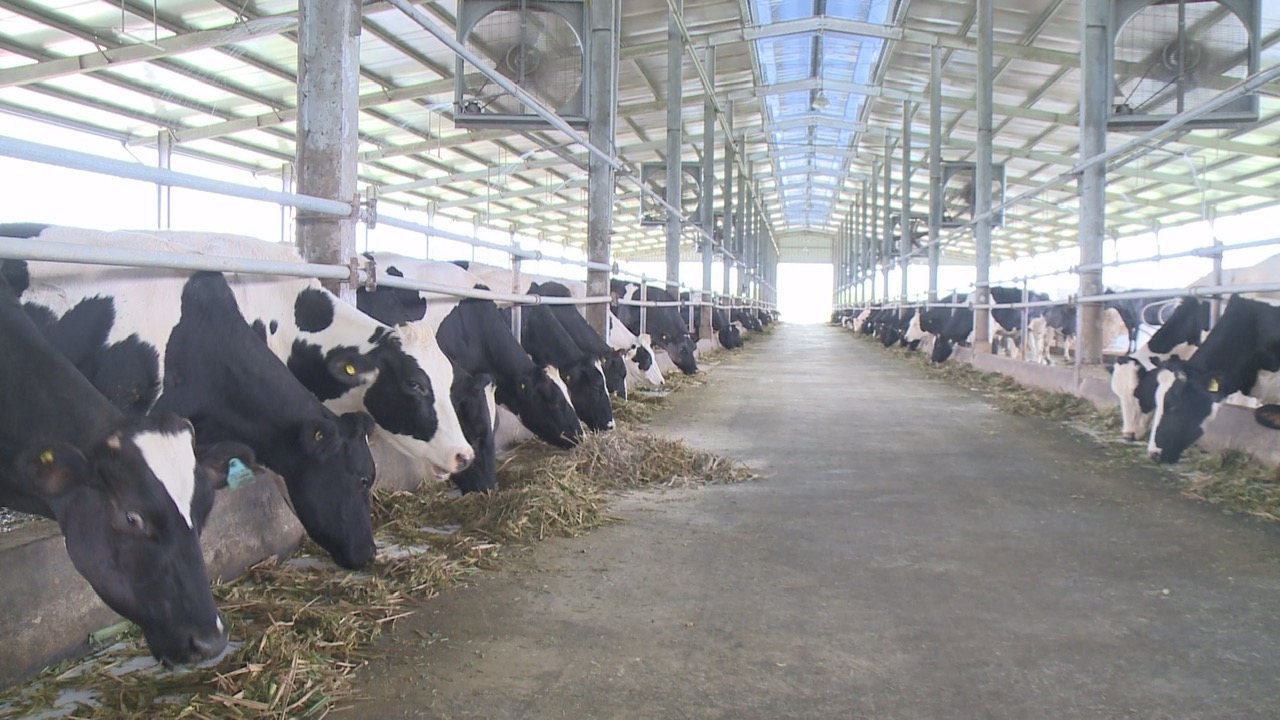
Dairy farm of Anova Agri Binh Duong Joint Stock Company in Phuoc Sang commune. Photo: Tran Trung.
Anova Agri Binh Duong Joint Stock Company's dairy farm in Phuoc Sang commune, Phu Giao district, is regarded as a forerunner in the application of advanced technology to the livestock industry.
The company's achievements have revitalized the local livestock industry. From traditional livestock husbandry with numerous hazards, many farms and households have invested and implemented it with courage. High economic efficacy is brought about by modern technology and advanced production methods.
Take us to a dairy farm with a closed process, where the majority of agricultural stages are fully automated, including food processing, refuse collection and treatment, and milking...
Nguyen Thanh Trung, general director of Anova Agri Binh Duong Joint Stock Company, stated that the farm is over 470 hectares in size and that construction began in early May 2013 with a budget of over 215 billion VND.
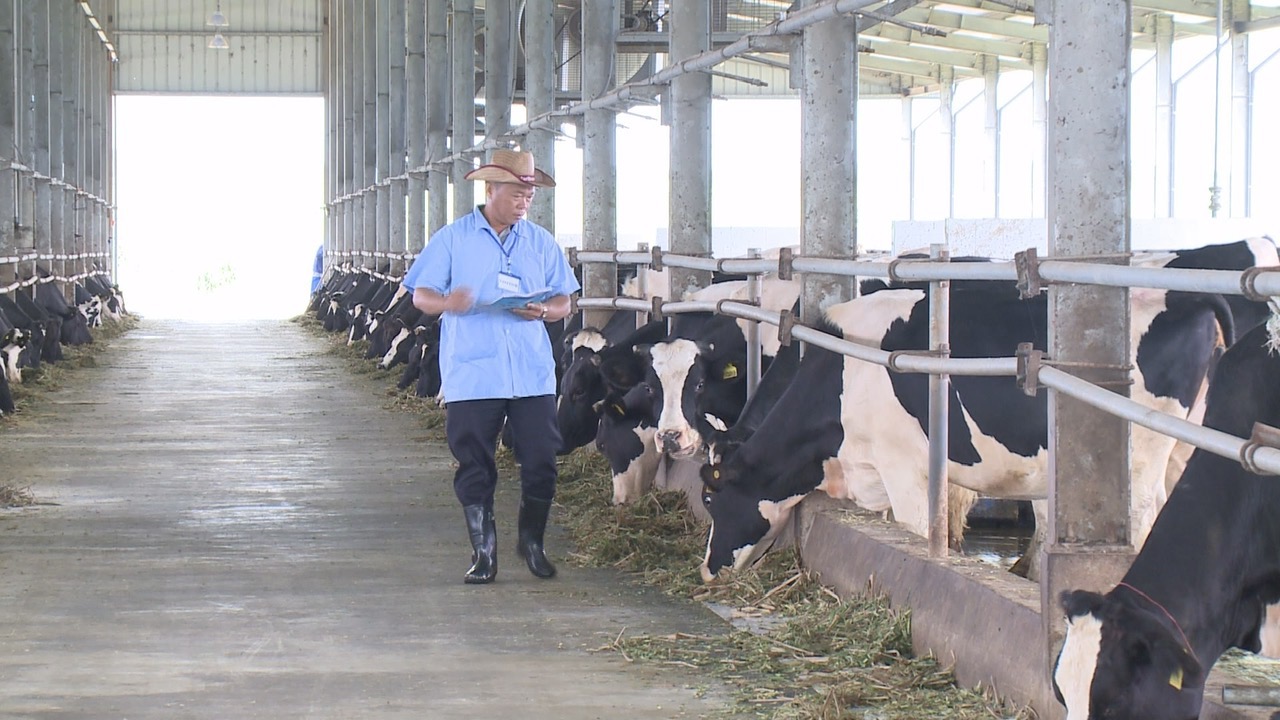
Nutritional technology and feeding control are applied, suitable for each age and group of cows. Photo: Tran Trung.
Consequently, the company has implemented CNC in dairy production by utilizing advanced European software for livestock management. The housing technology adheres to a closed system that is appropriate for each stage of bovine development and the overall herd rotation strategy.
Each barn has a playground arranged alternately with each barn section, which not only has the effect of local isolation, generating ventilation but also ensures that individual dairy cows have the necessary movement. In addition, the Company installed microclimate control technology in the barn, which is regulated by meters and management software and helps to maintain a suitable temperature equilibrium and prevent heat stress in cows.
In addition, nutritional technology and bovine feeding control are implemented, which are suitable for each age and group of cows. The nutritional regimen is suitable for each age and group of cows. The company has also implemented automatic milk chilling and preservation technology, which manages milk quality by automatically modifying and lowering milk temperature to a more suitable level, thereby preserving milk freshness.
Specifically, manure and effluent will be collected by machine in the barn, then separated and processed by technology into nutrient-rich organic fertilizer for the farm's vegetation fields, thereby contributing to environmental protection...
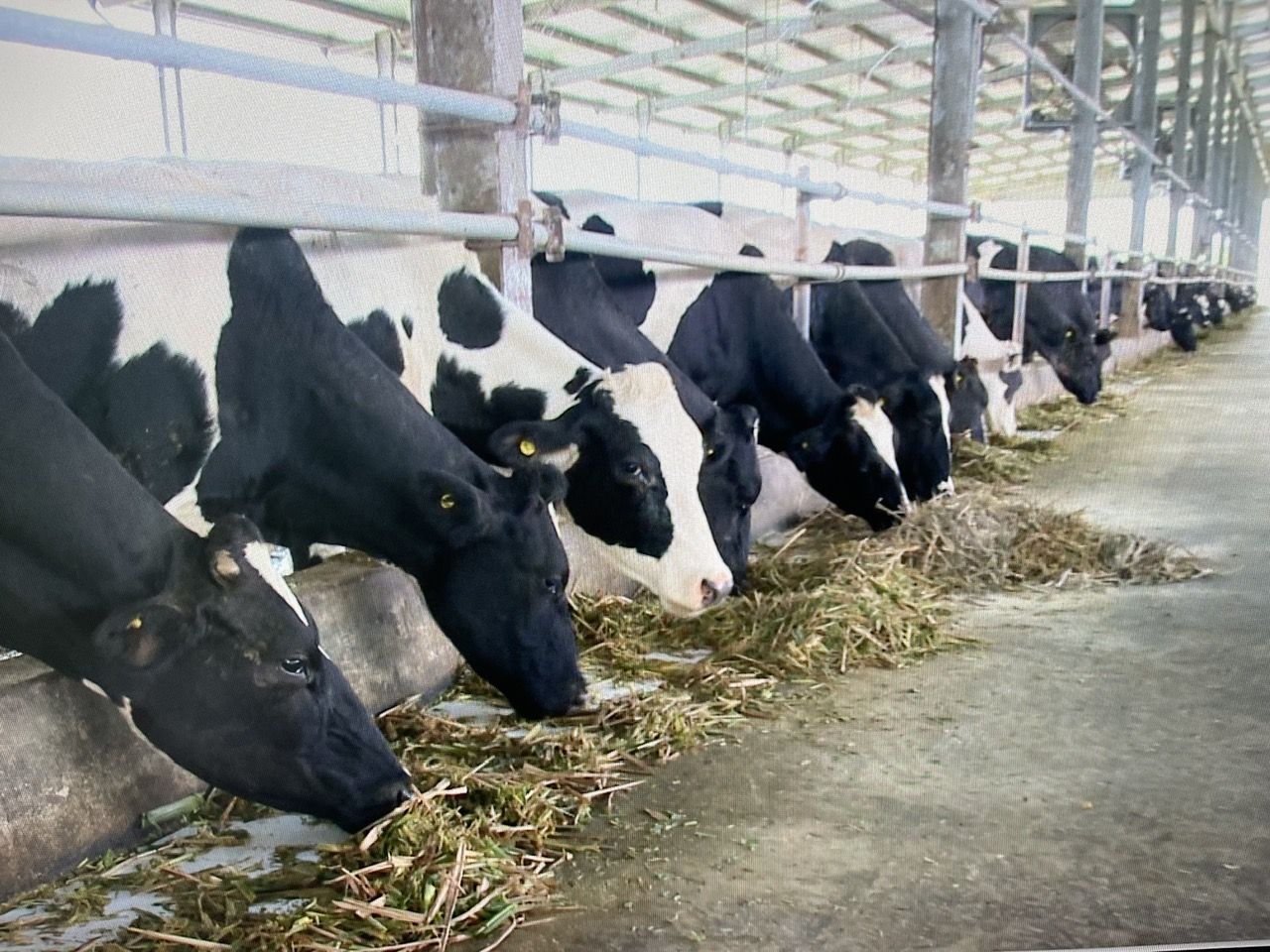
Thanks to the application of high technology in production, cows grow and develop stably, giving good quality milk. Photo: Tran Trung.
The company has been certified by competent authorities to implement livestock husbandry processes in accordance with VietGAHP standards (2018) and for animal disease safety (2019) due to its application of advanced technology.
Nguyen Thanh Trung, general director of Anova Agri Binh Duong Joint Stock Company, added: Currently, the proportion of Vietnam's fresh milk that is processed is low compared to market demand, so dairy companies must rely on dry milked and imported milk powder, so the current output of fresh milk is excellent.
On the other hand, dairy cows raised using high technology and advanced breeding techniques have lower production costs and the quality of milk is always more stable due to strict nutritional management, preservation of fresh milk after milking, and sanitation to prevent disease.
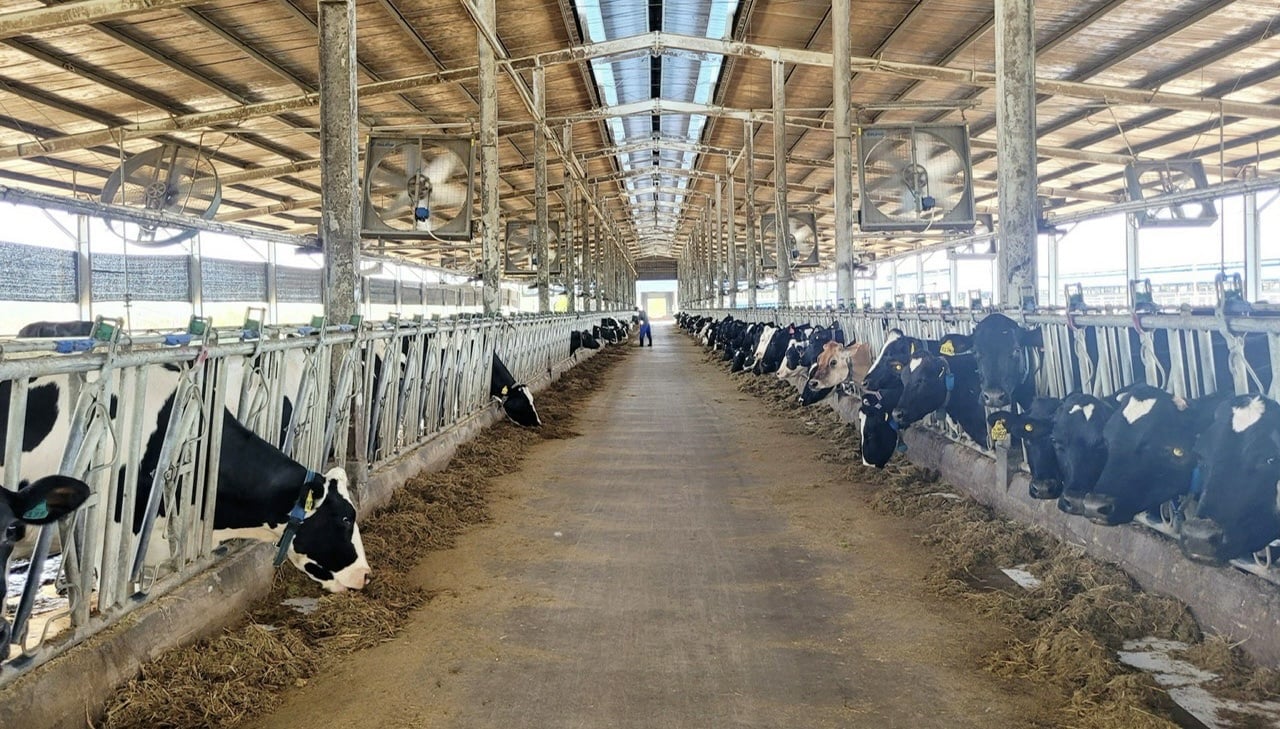
Currently, the farm's total dairy herd is over 1,000 cows, providing the market with 8 million liters of high-quality milk each year. Photo: Tran Trung.
Since that time, the purchase price of unprocessed, fresh milk at high-tech farms has consistently been higher than that of conventional agricultural households. Currently, the farm's dairy population consists of over one thousand cows, supplying the market with eight million liters of high-quality milk annually.
Tran Minh Duc, head of the Animal Husbandry and Veterinary Station of Phu Giao district, stated that in order to reduce the proportion and increase the production value of the agricultural sector, Phu Giao district is concentrating its resources on the development of the principal livestock (pigs, cows, and poultry). Simultaneously, the district encourages the development of secure concentrated production areas, diversifying livestock types to satisfy market demands within and beyond the district.
It can be seen that the application of high-tech livestock models reduces labor and time for workers; increasing accuracy, working speed, and optimizing costs, as well as effectively addressing environmental pollution and disease safety concerns, is regarded as a positive trend in the livestock industry today.
The evidence is the high-tech dairy farm operated by Anova Agri Binh Duong Joint Stock Company. Mr. Tran Minh Duc emphasized that the local animal husbandry and veterinary industry is collaborating with businesses to progressively transmit and replicate models that contribute to the sustainable development of Phu Giao's agricultural industry.
Translated by Linh Linh
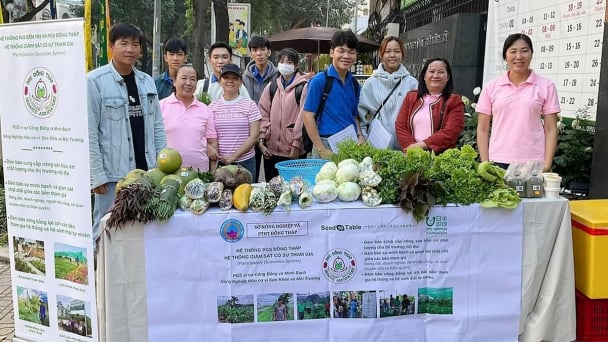
(VAN) Japan's grant aid project contributes to capacity building, promoting organic agricultural production, and fostering sustainable community development in Dong Thap province.
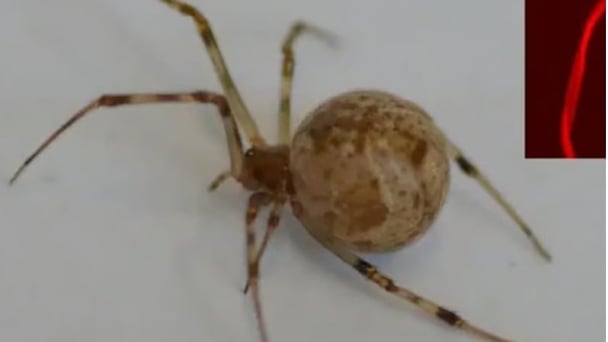
(VAN) For years, the CRISPR-Cas9 genome technology has been reshaping genetic engineering, a precision tool to transform everything from agriculture to medicine.

(VAN) Vietnam aims to become a 'leader' in the region in the capacity and managing effectively soil health and crop nutrition.
![Reducing emissions from rice fields: [Part 1] Farming clean rice together](https://t.ex-cdn.com/nongnghiepmoitruong.vn/608w/files/news/2025/05/05/z6509661417740_a647202949c539012a959e841c03e1d3-nongnghiep-143611.jpg)
(VAN) Growing clean rice helps reduce environmental pollution while increasing income, allowing farmers to feel secure in production and remain committed to their fields for the long term.
/2025/05/19/5136-1-144800_230.jpg)
(VAN) The Nghe An Provincial People's Committee has just approved the list of beneficiaries eligible for revenue from the Emission Reductions Payment Agreement (ERPA) in the North Central region for the year 2025.
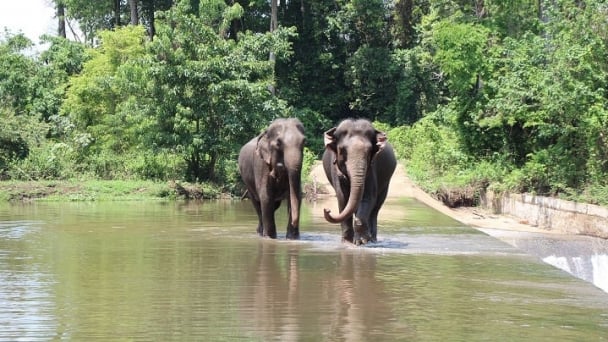
(VAN) 14 out of 35 domesticated elephants in Dak Lak province have had their living conditions improved, with 11 of them currently participating in the non-riding elephant tourism model.
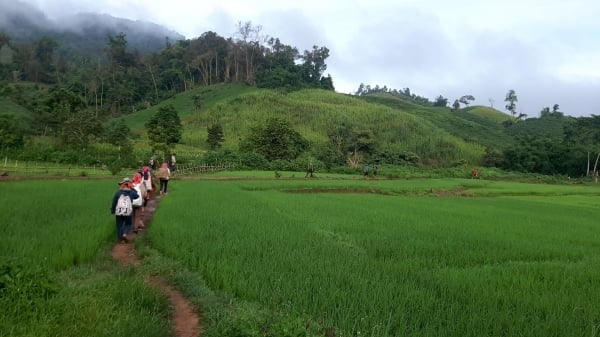
(VAN) Muong Nhe Nature Reserve hopes that being upgraded to a national park will lay the foundation for forest protection efforts to be carried out in a systematic, modern, and sustainable manner.